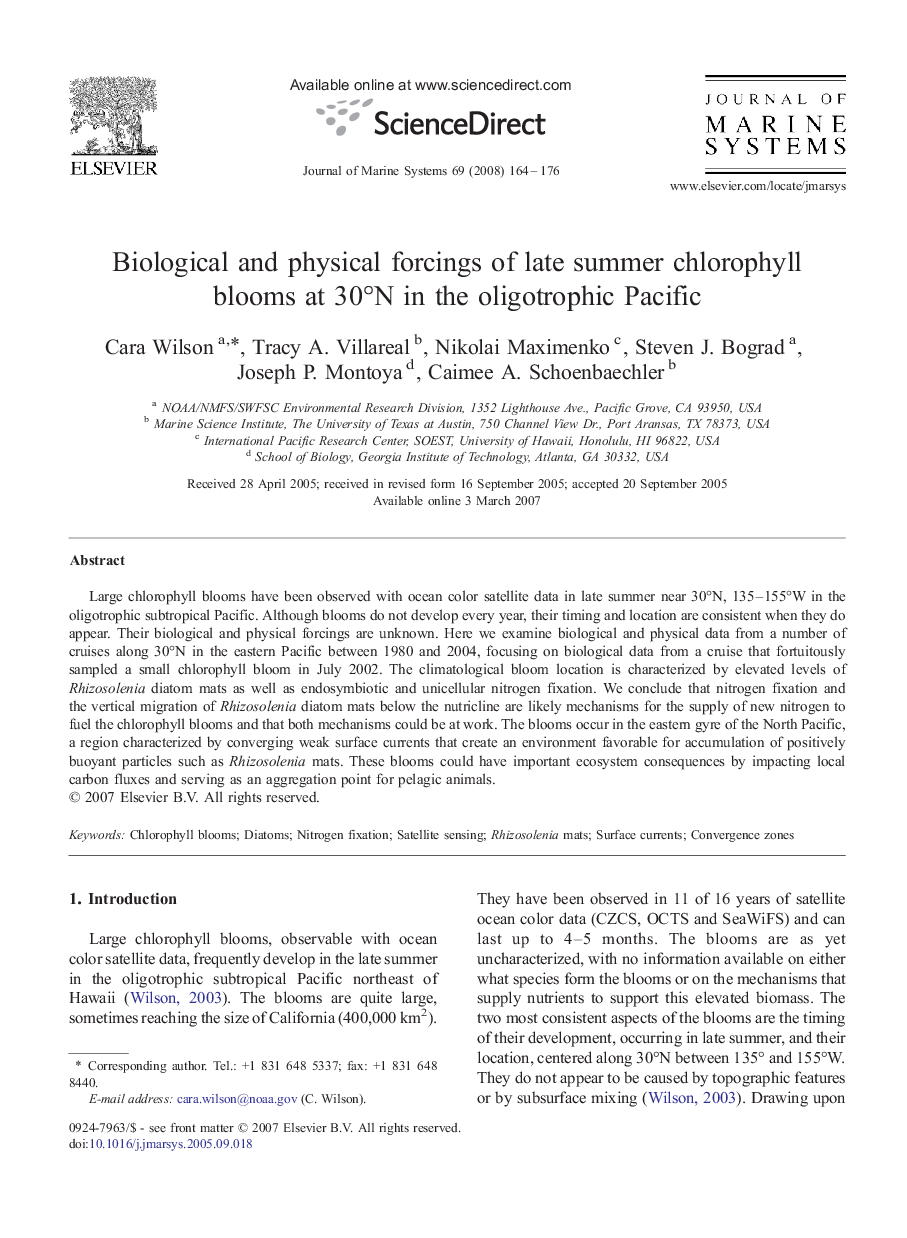| Article ID | Journal | Published Year | Pages | File Type |
|---|---|---|---|---|
| 4549155 | Journal of Marine Systems | 2008 | 13 Pages |
Large chlorophyll blooms have been observed with ocean color satellite data in late summer near 30°N, 135–155°W in the oligotrophic subtropical Pacific. Although blooms do not develop every year, their timing and location are consistent when they do appear. Their biological and physical forcings are unknown. Here we examine biological and physical data from a number of cruises along 30°N in the eastern Pacific between 1980 and 2004, focusing on biological data from a cruise that fortuitously sampled a small chlorophyll bloom in July 2002. The climatological bloom location is characterized by elevated levels of Rhizosolenia diatom mats as well as endosymbiotic and unicellular nitrogen fixation. We conclude that nitrogen fixation and the vertical migration of Rhizosolenia diatom mats below the nutricline are likely mechanisms for the supply of new nitrogen to fuel the chlorophyll blooms and that both mechanisms could be at work. The blooms occur in the eastern gyre of the North Pacific, a region characterized by converging weak surface currents that create an environment favorable for accumulation of positively buoyant particles such as Rhizosolenia mats. These blooms could have important ecosystem consequences by impacting local carbon fluxes and serving as an aggregation point for pelagic animals.
